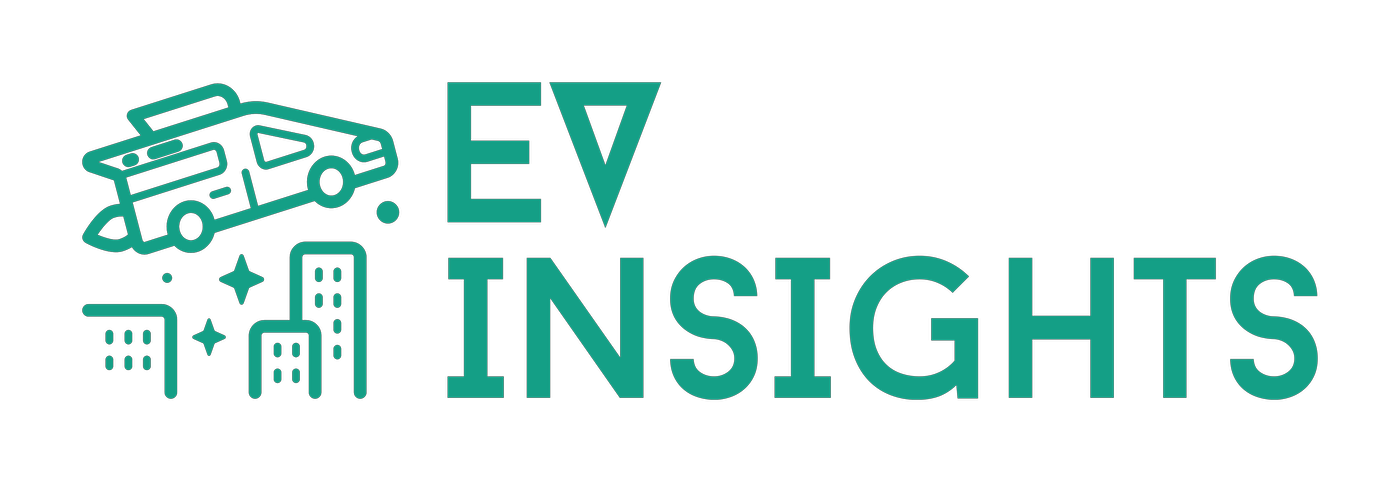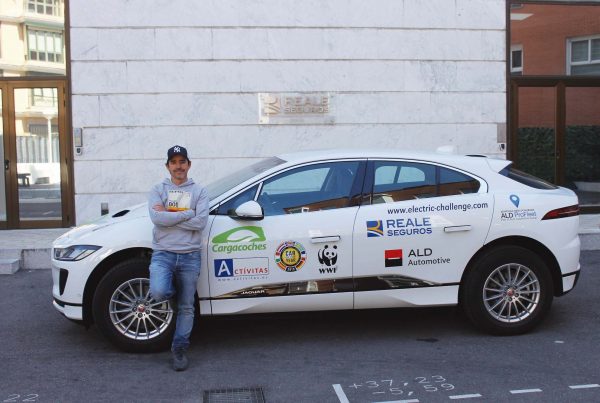The Role of E.ON’s 10,000 m² Drive TestingLab
Q: Can you tell us more about E.ON’s 10,000 m² Drive TestingLab and the significance of this facility?
The Drive TestingLab is a cutting-edge facility designed to test and refine charging solutions under extreme conditions. Equipped with three large climate chambers, the lab can simulate temperatures ranging from -40°C to +50°C, ensuring chargers perform reliably in diverse environments.
Spanning 10,000 m², the lab evaluates almost every AC hardware component that passes through our tenders, not only for vehicle compatibility but also for integration with photovoltaic systems, load management systems, and batteries. Our holistic approach ensures that we deliver reliable, efficient solutions that meet the needs of both B2B and B2C customers.
Additionally, the facility is equipped to test megawatt charging for trucks, featuring large garages where trucks can be driven in and charged. This capability is essential as we look towards the future of mobility, focusing on heavy-duty electric vehicles.
Collaboration and Innovation with Partners
Q: How do you collaborate with your partners and share the learnings from the testing facility?
Collaboration is key to advancing electric mobility. At E.ON, we openly share our findings and reports from the testing facility with our partners. This transparency helps them refine and enhance their products and solutions.
We often identify potential improvements related to safety, regulatory compliance, and technical performance, which we communicate to manufacturers. This feedback loop allows them to optimize their offerings and return for further testing. Our collaborative approach ensures the highest standards of safety and efficiency for electric vehicle charging systems deployed across Europe, fostering innovation and shaping the future of mobility.
Navigating the Regulatory and Policy Landscape
Q: What are your thoughts on the regulatory and policy landscape in Europe, and how do you see it evolving to support the growth of electric mobility?
The regulatory and policy landscape in Europe is indeed complex. Each country has its own regulations, which can hinder the creation of a fully integrated European market for electric mobility. However, I believe that electric mobility offers an opportunity for greater harmonization across Europe. Unlike the traditional energy sector, the electric mobility ecosystem, with its charging infrastructure and service providers, can potentially be more standardized and scalable across borders.
E.ON is already adopting a pan-European approach, delivering consistent processes, products, and services to customers across the continent. While achieving full regulatory integration may be a long-term objective, companies like E.ON can lead the way in driving innovation and collaboration, ultimately paving the way for a more unified European market.
Preparing for a Competitive and Mature Market
Q: How do you see E.ON and the broader energy industry preparing for the increasing competitiveness and maturity of the electric vehicle market?
As the electric vehicle market matures, competition intensifies, especially regarding the cost of kilowatt-hours. At E.ON, our strategy focuses on scalability and offering comprehensive solutions beyond just providing raw energy.
Our emphasis is on the B2B segment, where we are expanding our services to include load management, energy optimization, and integrated IT systems. By offering a broad suite of services, we can remain competitive even as kilowatt-hour costs decrease. The key is not just in providing energy, but in delivering a complete ecosystem that makes electric mobility an attractive and seamless option for our customers.
We are prepared for the challenges of a mature market, confident that our focus on scalability, comprehensive solutions, and partner collaboration will ensure long-term success in the electric mobility sector.
In conclusion, this interview highlights E.ON’s proactive approach to leading the electric mobility revolution. Through innovation, collaboration, and a commitment to sustainability, E.ON is well-positioned to shape the future of mobility in Europe and beyond.
[/vc_column_text][/vc_column][/vc_row]Electric mobility is transforming the way we think about transportation and energy usage. At the forefront of this revolution is Christoph Ebert, Head of E-Mobility at E.ON. In this interview, he shares his journey, insights, and vision for the future of electric mobility.
From Electric Bikes to Leading E.ON’s E-Mobility Division
Q: Can you share with us your journey into the world of electric mobility?
My journey into electric mobility began with a keen interest in electric bikes, or “pedelecs” as they’re known in Germany. During the 2008-2012 period, I was deeply involved in testing these bikes, which were gaining significant popularity. This experience opened the door to a broader involvement in electric mobility, particularly through a regional project linked to the 2018 Olympic Games bid for Munich and Garmisch-Partenkirchen. My role involved researching ways to enhance the sustainability of the tourism industry through electric mobility, marking my initial steps into this dynamic field.
Joining E.ON marked a pivotal moment in my career. Since then, I’ve been responsible for overseeing electric mobility in Germany, Austria, and Switzerland. A personal turning point was the birth of my first child, which prompted me to invest in a photovoltaic system for our home. This experience highlighted the immense potential of electric mobility and the benefits of generating my own energy for daily commutes.
Overcoming Internal Resistance at E.ON
Q: What was the experience like joining a large company like E.ON, and how did you navigate the internal resistance to electric mobility?
Joining a large organization like E.ON came with its set of challenges, particularly regarding internal skepticism towards electric mobility. From the outset, I anticipated doubts both within the company and society at large. However, starting in a small, startup-like team of 25 people within E.ON was incredibly rewarding. We managed to secure significant customers and OEMs, demonstrating the viability and business potential of electric mobility.
This journey, from 2018 to 2022, involved convincing not only myself but also my colleagues that electric mobility was the right direction. Today, E.ON is fully committed to electric mobility, integrating it as a core component of its corporate identity.
The Role of E.ON’s 10,000 m² Drive TestingLab
Q: Can you tell us more about E.ON’s 10,000 m² Drive TestingLab and the significance of this facility?
The Drive TestingLab is a cutting-edge facility designed to test and refine charging solutions under extreme conditions. Equipped with three large climate chambers, the lab can simulate temperatures ranging from -40°C to +50°C, ensuring chargers perform reliably in diverse environments.
Spanning 10,000 m², the lab evaluates almost every AC hardware component that passes through our tenders, not only for vehicle compatibility but also for integration with photovoltaic systems, load management systems, and batteries. Our holistic approach ensures that we deliver reliable, efficient solutions that meet the needs of both B2B and B2C customers.
Additionally, the facility is equipped to test megawatt charging for trucks, featuring large garages where trucks can be driven in and charged. This capability is essential as we look towards the future of mobility, focusing on heavy-duty electric vehicles.
Collaboration and Innovation with Partners
Q: How do you collaborate with your partners and share the learnings from the testing facility?
Collaboration is key to advancing electric mobility. At E.ON, we openly share our findings and reports from the testing facility with our partners. This transparency helps them refine and enhance their products and solutions.
We often identify potential improvements related to safety, regulatory compliance, and technical performance, which we communicate to manufacturers. This feedback loop allows them to optimize their offerings and return for further testing. Our collaborative approach ensures the highest standards of safety and efficiency for electric vehicle charging systems deployed across Europe, fostering innovation and shaping the future of mobility.
Navigating the Regulatory and Policy Landscape
Q: What are your thoughts on the regulatory and policy landscape in Europe, and how do you see it evolving to support the growth of electric mobility?
The regulatory and policy landscape in Europe is indeed complex. Each country has its own regulations, which can hinder the creation of a fully integrated European market for electric mobility. However, I believe that electric mobility offers an opportunity for greater harmonization across Europe. Unlike the traditional energy sector, the electric mobility ecosystem, with its charging infrastructure and service providers, can potentially be more standardized and scalable across borders.
E.ON is already adopting a pan-European approach, delivering consistent processes, products, and services to customers across the continent. While achieving full regulatory integration may be a long-term objective, companies like E.ON can lead the way in driving innovation and collaboration, ultimately paving the way for a more unified European market.
Preparing for a Competitive and Mature Market
Q: How do you see E.ON and the broader energy industry preparing for the increasing competitiveness and maturity of the electric vehicle market?
As the electric vehicle market matures, competition intensifies, especially regarding the cost of kilowatt-hours. At E.ON, our strategy focuses on scalability and offering comprehensive solutions beyond just providing raw energy.
Our emphasis is on the B2B segment, where we are expanding our services to include load management, energy optimization, and integrated IT systems. By offering a broad suite of services, we can remain competitive even as kilowatt-hour costs decrease. The key is not just in providing energy, but in delivering a complete ecosystem that makes electric mobility an attractive and seamless option for our customers.
We are prepared for the challenges of a mature market, confident that our focus on scalability, comprehensive solutions, and partner collaboration will ensure long-term success in the electric mobility sector.
In conclusion, this interview highlights E.ON’s proactive approach to leading the electric mobility revolution. Through innovation, collaboration, and a commitment to sustainability, E.ON is well-positioned to shape the future of mobility in Europe and beyond.
Electric mobility is transforming the way we think about transportation and energy usage. At the forefront of this revolution is Christoph Ebert, Head of E-Mobility at E.ON. In this interview, he shares his journey, insights, and vision for the future of electric mobility.
From Electric Bikes to Leading E.ON’s E-Mobility Division
Q: Can you share with us your journey into the world of electric mobility?
My journey into electric mobility began with a keen interest in electric bikes, or “pedelecs” as they’re known in Germany. During the 2008-2012 period, I was deeply involved in testing these bikes, which were gaining significant popularity. This experience opened the door to a broader involvement in electric mobility, particularly through a regional project linked to the 2018 Olympic Games bid for Munich and Garmisch-Partenkirchen. My role involved researching ways to enhance the sustainability of the tourism industry through electric mobility, marking my initial steps into this dynamic field.
Joining E.ON marked a pivotal moment in my career. Since then, I’ve been responsible for overseeing electric mobility in Germany, Austria, and Switzerland. A personal turning point was the birth of my first child, which prompted me to invest in a photovoltaic system for our home. This experience highlighted the immense potential of electric mobility and the benefits of generating my own energy for daily commutes.
Overcoming Internal Resistance at E.ON
Q: What was the experience like joining a large company like E.ON, and how did you navigate the internal resistance to electric mobility?
Joining a large organization like E.ON came with its set of challenges, particularly regarding internal skepticism towards electric mobility. From the outset, I anticipated doubts both within the company and society at large. However, starting in a small, startup-like team of 25 people within E.ON was incredibly rewarding. We managed to secure significant customers and OEMs, demonstrating the viability and business potential of electric mobility.
This journey, from 2018 to 2022, involved convincing not only myself but also my colleagues that electric mobility was the right direction. Today, E.ON is fully committed to electric mobility, integrating it as a core component of its corporate identity.
The Role of E.ON’s 10,000 m² Drive TestingLab
Q: Can you tell us more about E.ON’s 10,000 m² Drive TestingLab and the significance of this facility?
The Drive TestingLab is a cutting-edge facility designed to test and refine charging solutions under extreme conditions. Equipped with three large climate chambers, the lab can simulate temperatures ranging from -40°C to +50°C, ensuring chargers perform reliably in diverse environments.
Spanning 10,000 m², the lab evaluates almost every AC hardware component that passes through our tenders, not only for vehicle compatibility but also for integration with photovoltaic systems, load management systems, and batteries. Our holistic approach ensures that we deliver reliable, efficient solutions that meet the needs of both B2B and B2C customers.
Additionally, the facility is equipped to test megawatt charging for trucks, featuring large garages where trucks can be driven in and charged. This capability is essential as we look towards the future of mobility, focusing on heavy-duty electric vehicles.
Collaboration and Innovation with Partners
Q: How do you collaborate with your partners and share the learnings from the testing facility?
Collaboration is key to advancing electric mobility. At E.ON, we openly share our findings and reports from the testing facility with our partners. This transparency helps them refine and enhance their products and solutions.
We often identify potential improvements related to safety, regulatory compliance, and technical performance, which we communicate to manufacturers. This feedback loop allows them to optimize their offerings and return for further testing. Our collaborative approach ensures the highest standards of safety and efficiency for electric vehicle charging systems deployed across Europe, fostering innovation and shaping the future of mobility.
Navigating the Regulatory and Policy Landscape
Q: What are your thoughts on the regulatory and policy landscape in Europe, and how do you see it evolving to support the growth of electric mobility?
The regulatory and policy landscape in Europe is indeed complex. Each country has its own regulations, which can hinder the creation of a fully integrated European market for electric mobility. However, I believe that electric mobility offers an opportunity for greater harmonization across Europe. Unlike the traditional energy sector, the electric mobility ecosystem, with its charging infrastructure and service providers, can potentially be more standardized and scalable across borders.
E.ON is already adopting a pan-European approach, delivering consistent processes, products, and services to customers across the continent. While achieving full regulatory integration may be a long-term objective, companies like E.ON can lead the way in driving innovation and collaboration, ultimately paving the way for a more unified European market.
Preparing for a Competitive and Mature Market
Q: How do you see E.ON and the broader energy industry preparing for the increasing competitiveness and maturity of the electric vehicle market?
As the electric vehicle market matures, competition intensifies, especially regarding the cost of kilowatt-hours. At E.ON, our strategy focuses on scalability and offering comprehensive solutions beyond just providing raw energy.
Our emphasis is on the B2B segment, where we are expanding our services to include load management, energy optimization, and integrated IT systems. By offering a broad suite of services, we can remain competitive even as kilowatt-hour costs decrease. The key is not just in providing energy, but in delivering a complete ecosystem that makes electric mobility an attractive and seamless option for our customers.
We are prepared for the challenges of a mature market, confident that our focus on scalability, comprehensive solutions, and partner collaboration will ensure long-term success in the electric mobility sector.
In conclusion, this interview highlights E.ON’s proactive approach to leading the electric mobility revolution. Through innovation, collaboration, and a commitment to sustainability, E.ON is well-positioned to shape the future of mobility in Europe and beyond.

![[English]](https://evinsights.co/wp-content/plugins/sitepress-multilingual-cms/res/flags/en.png)
![[Spanish]](https://evinsights.co/wp-content/plugins/sitepress-multilingual-cms/res/flags/es.png)




